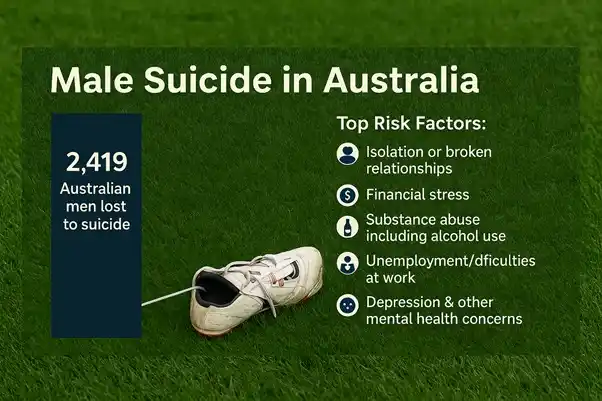Creating Healthier Workspaces: How stress leave can foster happier, healthier, and more productive employees
Employee mental health is pivotal to overall workplace wellbeing, impacting individual performance, job satisfaction, and organisational productivity. The global pandemic certainly drew attention to employee mental health and shone a spotlight on just how important a healthy and supportive work environment is for fostering the best in employees.
Employee mental health covers various factors, including stress management, work-life balance, and emotional well-being. Employers are increasingly recognising their responsibility in creating a workplace environment that promotes mental health. Counselling services, flexible work arrangements, and open communication around mental health have all been shown to have positive outcomes.
In response to mental health challenges, the concept of stress leave has also emerged. Stress leave allows employees to take extended time off work to recover from stress. In Australia, illness due to stress is a legitimate reason for taking personal leave (more on this later).
Understanding stress
Stress is the root of many mental health issues, so let’s understand what stress is and how it affects the body.
The World Health Organization defines stress as worry or mental tension caused by a difficult situation. Stress is a normal human reaction to many of life’s obstacles. However, everyone responds and copes with stress differently.
When a stressful event occurs, the body releases several hormones, including adrenaline and cortisol. Some people may respond physically to these hormones, experiencing symptoms such as headaches and insomnia, while others may respond emotionally, experiencing symptoms like anxiety or irritability. Others may have cognitive issues, such as finding it difficult to concentrate or inducing changes in appetite.
Chronic stress (prolonged exposure to stress) harms one’s health and can compound existing health conditions. It can also lead to an increased reliance on addictive substances like alcohol or drugs.
Stress can also be a gateway to other mental health issues – notably anxiety and depression. These conditions often necessitate medical intervention and may require extended time off work.
Understanding stress in the workplace
Discrimination, inequality, job insecurity, and excessive workloads within a work environment can significantly impact an employee’s mental health.
A workplace report by global analytics and advice firm Gallup found that in 2022, almost half of working Australians reported high levels of stress at work.
Furthermore, an estimated 12 billion working days are lost globally every year due to depression and anxiety.
A healthy work environment that promotes wellbeing is one that gives employees a meaningful sense of purpose and confidence, opportunities for personal and professional growth and has a supportive team environment.
The current worldwide statistics on workplace mental health underscore the importance for employers to address issues and proactively implement effective mental health solutions.
10 Factors That Lead To Workplace Stress

- High workload: Excessive tasks or responsibilities can overwhelm employees.
- Unclear expectations: Lack of clarity regarding job roles and expectations can create stress.
- Poor work-life balance: Difficulty in balancing work and personal life can lead to stress.
- Lack of support: Inadequate support from colleagues or management can contribute to stress.
- Job insecurity: Fear of job loss or unstable employment conditions can be stressful.
- Conflict and bullying: Workplace conflicts or bullying behaviours can significantly impact stress levels.
- Inadequate resources: Insufficient tools or resources to perform tasks can be a source of stress.
- Limited control: Lack of control over one’s work or decision-making can be stressful.
- Poor Communication: Ineffective communication within the workplace can lead to misunderstandings and stress.
- Unhealthy work environment: Factors like noise, lack of privacy or uncomfortable physical surroundings can contribute to stress.
Are You Experiencing Stress at Work?
Emotional signals of stress:
- Anxiety or restlessness
- Heightened levels of irritability
- Feeling overly sad or tearful
- Procrastinating
- Lingering fears or prolonged periods of worry
- Unmotivated to complete tasks or lacking the ability to concentrate
Physical signs of stress:
- Insomnia, nightmares, and other sleep problems
- Frequent headaches
- Clashing with colleagues more than usual
- Muscular tension and pain
- Sweaty palms and feet
- Increased heart rate
- Tightness in the chest
- Appetite changes
- Notable changes in sleep patterns
- Nausea
- Digestive problems
These signs and symptoms of stress can have far-reaching consequences. Unaddressed chronic workplace stress can lead to burnout (often referred to as hitting the wall). Burnout can lead to other mental health issues, such as anxiety and depression, and it can affect one’s personal relationships and social life.
Burnout takes an average of three months to one year to recover from. This is why chronic workplace stress should be dealt with as soon as possible.
How Stress and Poor Mental Health Affect Employees
Unfortunately, stigma around mental health may stop an employee from seeking help. Fears about losing their job or facing negative repercussions can lead to workers staying quiet about their struggles.
It is important to remember that mental health issues are far more common than one may think.
Research indicates that about 45% of Australians aged between 16 and 85 will experience a mental illness at some point in their life.
Similarly, one out of five Australian adults will likely experience a mental illness every year.
For employers, it may be interesting to note that Australian businesses lose over $6.5 billion each year by failing to provide early intervention or treatment for employees with mental health conditions.
Mental illnesses may be pre-existing or may develop during the term of employment. No matter how the illness develops, it should be handled with care. While many individuals can manage their mental health without it impacting their work, some may struggle.
This is why a workplace support system is crucial.
Implementing workplace stress solutions can lead to benefits for both employers & employees:
Adam Szmerling, an accredited Mental Health Social Worker and Clinical Psychotherapist, says, “Stress responses are inherently body-based responses to perceived threat and overwhelm. Thus, focusing on body-based coping strategies can be extremely effective in coping well with and minimising stress. This could mean a daily walk or swim, breathing-based activities such as mindfulness, or a combination of breath and body movement in activities such as yoga.”

- Increased Productivity: A happier, more engaged staff will be motivated and focused to produce better work.
- Decreased Absenteeism: Mental health support includes early detection and treatment of mental health problems, leading to less sick days being taken.
- Enhanced Retention of Staff: Organisations that provide mental health services exhibit a dedication to the welfare of their workforce. This can lower turnover rates and increase employee loyalty.
- Enhanced Innovation and Creativity: Innovation and creativity are fostered by a sound mental state. Mentally healthy workers can be more creative, coming up with fresh concepts and solutions.
- Positive Workplace Culture: Making mental health a priority promotes a more empathetic and perceptive workplace environment.
Setting employee mental health as a top priority is not only morally correct, but it is also a wise business decision.
Businesses that provide mental health services benefit from increased employee happiness and productivity, decreased absenteeism, and increased profitability.
In today’s challenging corporate world, firms may cultivate a more resilient and effective workforce by recognising the mental health requirements of their employees and can benefit from offering appropriate assistance.
Is Stress Leave an effective solution?
According to the National Institutes of Health, stress leave seems to be largely successful.
Individuals seek mental health support for a myriad of reasons, from personal to work-related stressors.
Prioritising mental health support is ethically sound and yields significant advantages for the company. Investing in mental health initiatives cultivates a more dedicated, productive, and engaged workforce.
All You Need to Know About Taking a Stress Leave in Australia
Eligibility for stress leave may depend on your state or territory and company’s policy. It is often advised to see a mental health professional or doctor to receive a doctor’s note that qualifies you for stress leave.
Often, you will then need to speak to an HR representative or submit a request for time off. Like any other illness, you may need to clearly explain your symptoms and how they impair your day-to-day activities. Always remember to check eligibility for stress leave entitlements as this can vary according to particular workplace agreements.
There are many mental health conditions that may qualify you for stress leave. These include:
- Work-related stressors: Common sources of work-related stress that may necessitate stress leave include an excessive workload, unaccommodating deadlines, bullying, harassment and discrimination.
- Personal circumstances: Workers may take stress leave in response to personal circumstances, including relationship or family problems, financial troubles or health challenges.
- Traumatic events: Serious accidents, natural disasters, or the death of a loved one can all result in a great deal of stress and necessitate the need for stress leave.
In Australia, stress leave is normally only available for a set period, the precise duration of which is decided case-by-case.
The nature and intensity of the stressor, the person’s general health, and the demands of their profession are just a few of the variables that may affect how the stress leave duration.
Ten days of personal or caregiver leave are allowed annually in Australia under the National Employment Standards (NES). These days can be taken for stress-related conditions.
These can be taken on separate occasions. Sometimes, one may need to take longer than ten days off. In certain situations, a person might be entitled to take more time off as part of an unpaid leave of absence or by arrangement with their employer.
It is important to remember that job demands may impact how long a stress leave lasts.
How long is too long for Stress Leave?
The severity of the employee’s ailment and the employer’s policy are two important criteria determining the answer to this question.
Stress leaves can often cover a few days to several months. Long-term stress leave is often granted for persistent stress or a more significant mental health problem, whereas short-term stress leave is typically granted for acute stress or anxiety.
Here are some tips to effectively cope with workplace stress:
Humaira Ansari, Hypnotherapy, NLP, and Counselling suggests, “Practice mindfulness techniques such as deep breathing and meditation (centering the mind) to stay present, preventing the mind from wandering and worrying and relaxing the body. Short breaks throughout the day would help refresh and recharge both the mind and the body, promoting a better focus and less stress.”

- Prioritise and organise: Break down tasks, prioritise them, and organise your workflow to manage your workload more effectively.
- Set realistic goals: Establish achievable goals and timelines to avoid overwhelming yourself.
- Take breaks: Regular breaks throughout the day can help refresh your mind and prevent burnout.
- Communicate effectively: Open and honest communication with colleagues and supervisors can foster a supportive work environment.
- Delegate responsibilities: Don’t hesitate to delegate tasks when possible, sharing the workload and reducing individual stress.
- Practice time management: Efficiently manage your time by setting boundaries, avoiding multitasking, and focusing on one task at a time.
- Establish boundaries: Build clear boundaries between your professional and personal life to maintain a healthy work-life balance.
- Engage in stress-relieving activities: Incorporate stress-relief activities into your routine, such as exercise, meditation, or hobbies.
- Seek support: Reach out to colleagues, friends, or professionals for support when needed.
- Review and adjust: Regularly assess your workload and stress levels and be willing to adjust strategies or seek help if necessary.

Settling in: going back to the office after taking stress leave
Reintegrating into the workplace following stress leave can be challenging. First and foremost, it is important that one takes ample time for complete healing before resuming work duties.
Transparent communication with the employer about any limitations or concerns regarding the return to work is crucial. In specific instances, a phased approach to returning to work, incorporating reduced hours or modified responsibilities, may facilitate a seamless transition. Collaborating with the employer to devise such a plan can be instrumental in preventing a recurrence or flare-up of stress-related issues.
Employers also bear the responsibility of implementing reasonable measures to support and accommodate the return to work for their employees. This may involve modifying responsibilities, providing additional training or assistance, or adjusting the workspace to alleviate stress and promote well-being. Individuals concluding a stress leave can initiate a collaborative process with their immediate supervisor to formulate a return-to-work plan. This plan could involve an initially reduced workload, gradually increasing with regular check-ins to ensure a smooth and supported transition back to full work responsibilities.
A few other variables that can lower workplace stress while returning from stress leave are:
- Receiving support from colleagues, friends, or family
- Having a positive attitude
- Pursuing interests or hobbies
- Taking time off work during holidays and weekends
- Refraining from taking work home
Navigating Stress Leave: Your legal rights in Australia
Taking stress leave is a crucial resource for individuals needing time off from work to recover from stress-related disorders. In Australia, employees are legally entitled to this leave, and companies are responsible for supporting their workers during this period. The Fair Work Commission in Australia can assist and support those seeking stress leave. Understanding the leave requirements and the application process is crucial.
Employers are obligated to maintain confidentiality regarding any medical information they receive. Although there might be associated costs in obtaining medical proof for the leave request, it is a legal requirement. Workplace support programs can play a significant role in facilitating a smooth transition for both individuals taking stress leaves and those returning to work.
Stress leave prevention: The smartest tactic.
Stress leave can be effective in addressing and alleviating the strain on those suffering from workplace stress and its associated effects. Stress leave effectively allows individuals to recuperate and restore their mental resilience. It can be an effective solution for already stressed individuals.
Importantly, organisational leaders should continue to proactively recognise and address the unique underlying stressors in their workplace. They should identify and implement solutions that foster a healthier and more supportive work environment. By doing so, they essentially mitigate the need for stress leave and promote overall employee well-being.
Know someone who needs help? If you or someone you know wants help to deal with workplace stress and make a positive change, reach out for professional help. Visit us at https://www.baysidepsychotherapy.com.au/ and help us help you.
Here are a couple of blogs written on this topic you might find useful:
What Are Australians Most Afraid Of? N...
From snakes and spiders to needles and ghosts, fear takes many forms. But what do Australians fear most in 2025? At Bayside Psychotherapy, our expert.
Is It Time For The AFL To Cast A Menta...
At Bayside Psychotherapy we are passionate about mental health and like many fellow Melbournians, many on our team are avid AFL fans. So when two of our.
Exploring Emerging Therapies: Understa...
At Mind Medicine Australia, we are dedicated to transforming the trea.
The Balance of Power in Romantic Relat...
Why do some relationships thrive while others feel like a constant tug-of-war? Power dynamics lie at the heart of this balance.











